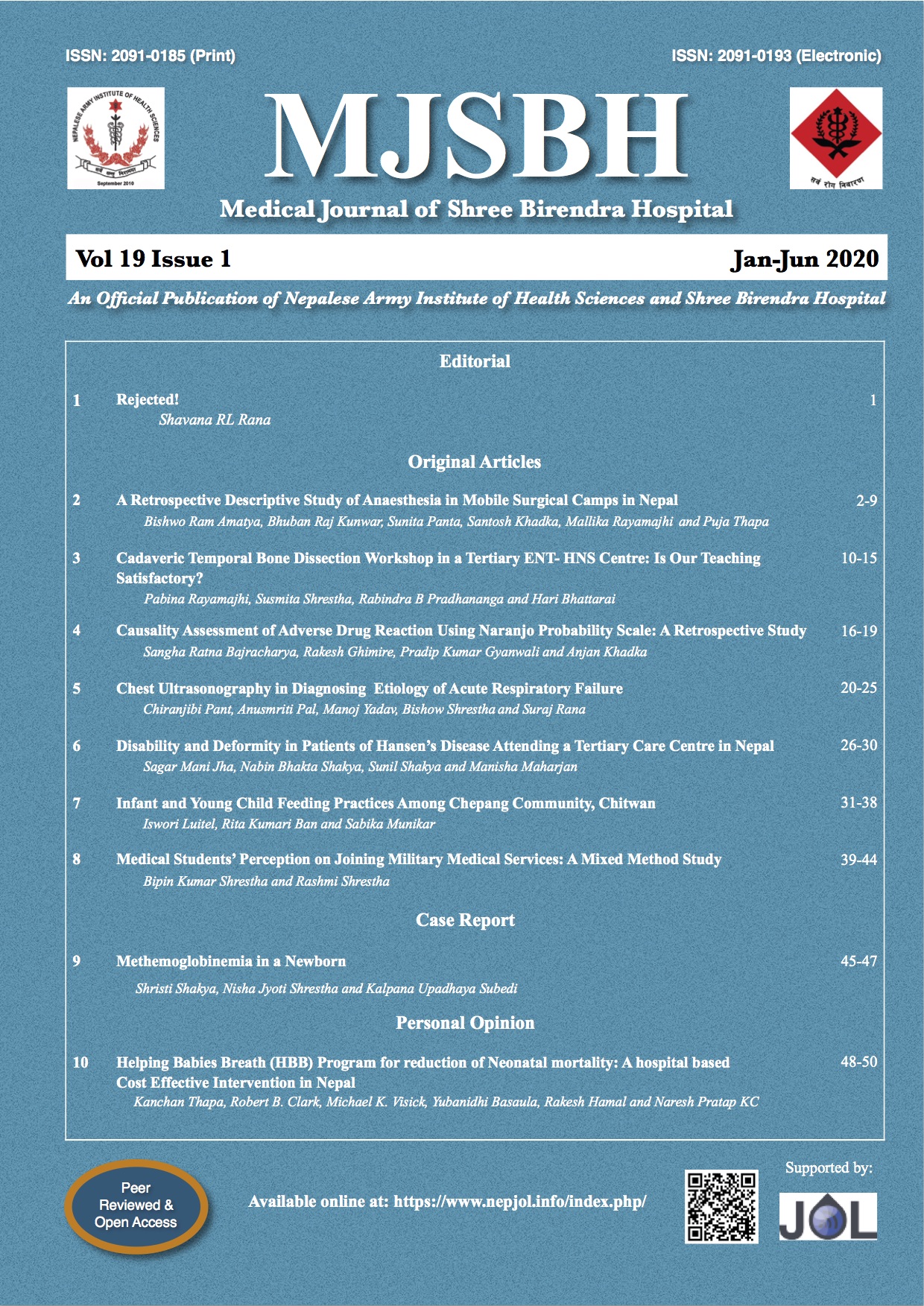Causality Assessment of Adverse Drug Reaction Using Naranjo Probability Scale: A Retrospective Study
Keywords:
adverse drug reaction, causality, naranjo algorithmAbstract
Introduction: Globally, Adverse Drug Reaction (ADR) has been listed as the sixth leading causes of death. Recognition of ADR and establishment of relationship of drug with the symptom is the first step to the management of the problem. In this study, Naranjo algorithm has been used which is one of the most accepted tools for the assessment of causality of ADR with the suspected drug.
Methods: A retrospective descriptive study was done which included 35 reported cases of ADRs in Drug Information Unit (DIU) in tertiary care teaching institute of Nepal from Dec 2015 to Oct 2016. Based on the information in the reported ADRs forms, categorisation was done using Naranjo’s ADR Probability scale. The data was analysed using SPSS version 16.0 and descriptive statistics was used.
Results: It was seen that ADRs were more common in male (n=20) as compared to female (n=15). Amongst male, ADRs were more common in age group 50-75 years (n=8). ADRs were most commonly seen with antimicrobial agents (40%) followed by Non-Steroidal Anti-inflammatory Drugs (NSAIDs) (20%) and immunosuppressants (20%). Within the antimicrobial agents, anti-tubercular drugs (20%) contributed the most in ADRs and hepatotoxicity was the most common ADR seen. Majority of ADRs were categorised under possible (n=29) followed by probable (n=6).
Conclusions: Naranjo algorithm could be a useful tool for causality assessment of ADR which can help physicians to guide the therapy.
Downloads
Downloads
Published
How to Cite
Issue
Section
License
This license enables reusers to distribute, remix, adapt, and build upon the material in any medium or format for noncommercial purposes only, and only so long as attribution is given to the creator.




